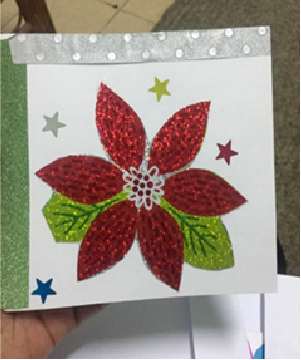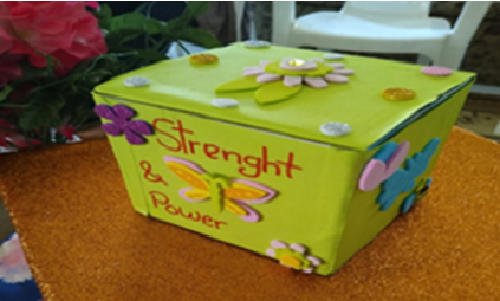Art and Domestic Violence - Creating tools for healing and empowerment

By Dr Helena Ann Mitchell and Dr Verina Waights
This blog recalls how the use of art, as part of the British Academy funded ARCLIGHT project enabled a group of women in Guyana to address the violent and abusive domestic environments facing them. They had left their homes and communities to live in a sheltered domestic violence refuge with their children. Drawing pictures, reciting poems, and writing stories about those traumatic experiences helped them to develop positive thinking and strengthen their emotional wellbeing. It subsequently empowered them to discuss plans for leaving the refuge and return to a life outside. Surprisingly, gaining employment was their main cause for concern around establishing a safe environment for themselves and their children.
Domestic violence is a persistent and major problem throughout the world that seriously impacts on individuals’ lives. It frequently leads to physical, psychological, and social problems. Inman & Rao (2018) define it as a pattern of behaviour between people in an intimate relationship where the intent is to control and dominate through psychological, physical, and sexual mistreatment. This abuse can include cursing and screaming, as well as degradation by constantly criticizing a spouse’s thoughts, feelings, and opinions. More severe forms involve threats to cause harm, remove children, or kill the partner or oneself. The perpetrator is often in a position of power by controlling finances, food, and socialisation with other family members.

Through art the women in the study were able to describe their experiences of hardship and coping with domestic violence and abuse. Feeling ‘free’ was a main theme they wanted to share as they felt they had “got away” from the abuse and could begin to rebuild their lives. The pictures created showed how women’s sense of self-worth, confidence and self-esteem grew as they created boxes filled with epigrams and images of their views, hopes and aspirations. Their self-belief increased as they created pictorial toolboxes bulging with ideas and skills in readiness to begin new lives in a new community. The acquisition of these artistic skills helped some of the women to gain employment. The confidence developed in creating pictures and other resources led to one applying for an entrepreneurial course and another produced Christmas cards which she later developed as a business.
As they viewed each other’s pictures, toolbox contents and listened to poems, they learned how others coped with domestic violence. They realized they were not alone and recognized honesty as important when disclosing feelings rather than withholding them. They admitted to feeling depressed, angry, and fearful for the future, yet were afraid to seek help within their communities as that trust had been broken. The women agreed that transition back to the community was often difficult due to inadequate or not easily accessible support services. Support was therefore crucial when they returned to the community.
The pictures demonstrated happier times with families and friends especially periods of children spending time with their parents and siblings and community members. Unfortunately, those experiences had changed following the abuse. Many felt they could not return to their communities because that is where the abuse started. Their pictures highlighted that change was required to make the necessary lifestyle changes and develop new skills. They identified that they had to stay connected with relevant others to create a new life for themselves and their children. They began to feel mentally and physically stronger to cope with any adversity that they may face during this critical stage of their lives.

As a researcher I felt privileged to be researching alongside these very strong and resilient women. Reflecting on their experiences of abuse through art made me realise how living in an abusive relationship undermined the women’s ability to feel confident in coming forward to deal with their situation. Their pictures told their story as they visualised what had happened to them. The aftereffects of abuse can be so detrimental it leaves long lasting psychological scars for all involved. When, through art, such women feel supported and encouraged to describe, visualise, and discuss their feelings, it helps them develop the courage necessary to leave an abusive environment, seek psychological support to adapt to the changes required thus improving their physical and emotional wellbeing.
Main image credit: Helena Ann Mitchell
